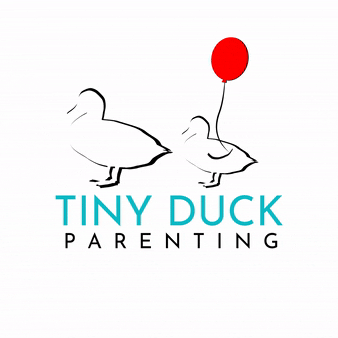Welcome to Tiny Duck Parenting, where we navigate the quirkiness of parenthood one bedtime at a time and help you teach your toddler to stay in their bed! Today, let’s dive into the whimsical world of toddler sleep training and explore how to gently guide your little one into the enchanting embrace of their own bed.
1. Establish a Magical Toddler Bedtime Routine
Setting the ideal bedtime for your toddler is crucial for their overall well-being and development. According to the Centers for Disease Control and Prevention (CDC), toddlers aged 1-2 years should aim for 11-14 hours of sleep per 24 hours, including naps. For children aged 3-5 years, the recommended sleep duration slightly decreases to 10-13 hours.
Establishing a consistent and appropriate bedtime is key to ensuring your little one gets the necessary restorative sleep for their age group.
One factor to consider when determining the perfect bedtime is the duration between the end of their last nap and lights out. Generally, experts recommend maintaining a gap of approximately 4.5-5 hours between the end of the afternoon nap and bedtime. This interval allows your toddler enough time to build up the sleep pressure, ensuring they are adequately tired when bedtime arrives.
Creating a bedtime routine incorporating winding-down activities can help signal your toddler that it’s time to prepare for sleep. This may include activities such as reading a bedtime story, taking a warm bath, or engaging in calming activities that help transition from the busyness of the day to a more relaxed state. Consistency in these pre-bedtime rituals reinforces the association between these activities and the upcoming sleep, making it easier for your toddler to settle down when the time comes.
Remember that individual variations exist, and paying attention to your toddler’s cues and adjusting their bedtime accordingly is essential.
Signs of sleepiness, such as yawning, rubbing eyes, or a decrease in activity, can serve as valuable indicators to start the bedtime routine. Sometimes, a sleepy toddler can even look like a huge burst of energy.
In essence, the ideal bedtime for your toddler is a delicate balance between their age-appropriate sleep needs, the timing of their last nap, and the establishment of a consistent and calming bedtime routine. By aligning these elements, you create a sleep environment that promotes healthy sleep habits, contributing to your toddler’s overall physical and emotional well-being. So, snuggle up with your little one, embrace the tranquility of bedtime, and ensure they embark on a night of restful and rejuvenating sleep.
Creating a consistent bedtime routine is key to helping your toddler understand that it’s time to wind down. Craft a magical bedtime routine chart featuring whimsical illustrations and fun activities that make bedtime an adventure. We are a little bias, but we think our toddler bedtime routine chart is pretty awesome! Include steps like brushing teeth, reading a bedtime story, and singing a lullaby. This routine will not only soothe your toddler but also signal that it’s time to snuggle into their cozy nest.

2. Transform the Bed into a Wonderland
Creating a magical sleep space for your toddler is more than just arranging pillows and blankets; it’s about crafting a haven of comfort and excitement that invites them into a world where dreams come to life. To achieve this, consider transforming your toddler’s bed into a wonderland that sparks their imagination and provides a sense of security.
Start by decorating their bed with their favorite characters or themes. Whether it’s superheroes, princesses, or friendly animals, incorporating elements that resonate with your toddler’s interests can turn their bed into a place where the extraordinary happens. Soft, cozy bedding in lively colors adds to the visual appeal and contributes to the overall comfort of their sleep environment.
Introduce a plush friend or a security blanket as their sleep-time companion. This cuddly sidekick adds a touch of reassurance and becomes a familiar presence in the land of dreams. To enhance the cozy atmosphere, consider limiting stuffed animals to one per each hand – a tactile and comforting arrangement that can help your toddler feel secure as they drift off to sleep without overcrowding the bed making it difficult to find their comforting stuffed animal.
Darkening the room is crucial for creating an optimal sleep environment. Opt for blackout shades to limit natural light coming into the room, signaling to your toddler that it’s time to wind down. A darkened room helps regulate their circadian rhythm, promoting a deeper and more restful sleep. Additionally, eliminate the use of night lights, as this can interfere with the production of melatonin, the hormone responsible for sleep.
To further enhance the sleep ambiance, introduce a white noise machine. This device can drown out ambient noises, creating a consistent background sound that promotes relaxation and helps your toddler transition into a serene slumber. The rhythmic hum of white noise mimics the comforting sounds of the womb, providing a soothing auditory backdrop for their bedtime experience.
Empower your toddler in the decision-making process by allowing them to select a new comforter or special patterned sheets for their bed. This not only adds a personalized touch to their sleep space but also instills a sense of ownership, making bedtime a positive and empowering experience.
The transformation of your toddler’s bed into a wonderland involves a careful orchestration of elements that cater to both comfort and excitement. From the visual appeal of themed decor to the tactile reassurance of plush companions, and the practical considerations of room darkening and white noise, each aspect contributes to a sleep environment that nurtures your toddler’s sense of security and encourages sweet dreams. So, embark on this creative journey, and watch as your toddler’s bed becomes a magical portal to a world of restful slumber and delightful dreams.
3. Be the Sleep Coach of Sweet Dreams
Consider enlisting the help of a toddler sleep coach if you find yourself facing challenges. A professional can provide personalized guidance and strategies to tackle specific sleep issues. They can work with you to create a tailored plan that aligns with your toddler’s unique sleep patterns and needs, offering a helping hand on your journey to dreamland delight.
Embarking on the journey of toddler sleep training can sometimes feel like navigating uncharted waters. If you find yourself facing challenges, consider being the dedicated sleep coach for your little one or enlisting the assistance of a professional toddler sleep coach. Their expertise can be invaluable in addressing specific sleep issues and tailoring a plan that aligns with your toddler’s unique sleep patterns and needs.
At Tiny Duck Parenting, we understand the nuances of toddler sleep, and that’s why we offer our online toddler sleep training course, Week to Sleep Online or Week to Sleep with a Coach. This comprehensive program is designed to provide parents with the tools and strategies needed to navigate the intricate world of toddler sleep. Unlike infant sleep training, toddler sleep training comes with its own set of challenges and considerations, and our course is tailored to meet those specific needs.
Our online course not only offers expert guidance but also emphasizes the importance of creating a positive sleep training experience. We believe that fostering a nurturing environment is crucial for your toddler’s well-being. As part of the course, we introduce a toddler sleep sticker chart, a delightful tool to celebrate the journey toward better sleep. The sticker chart not only reinforces positive behavior but also turns the sleep training process into a fun and rewarding adventure for your little one.
Celebrating success is a key element of the Week to Sleep program. As your toddler achieves milestones in their sleep routine, the course encourages acknowledging and celebrating these victories. Positive reinforcement plays a pivotal role in creating lasting sleep habits, and our course is designed to make the journey to dreamland a joyous and rewarding experience for both you and your toddler.
Importantly, we understand that time is of the essence for busy parents. The “Week to Sleep” program is crafted with efficiency in mind, aiming to achieve noticeable improvements in your toddler’s sleep within just a week. This condensed timeline ensures that sleep training becomes an effective and manageable process, fitting seamlessly into the dynamic lives of modern families.
In summary, whether you choose to be the sleep coach or enlist the assistance of a professional, our “Week to Sleep” online toddler sleep training course offers a comprehensive and positive approach to addressing sleep challenges. With a focus on celebrating success, personalized strategies, and efficiency, the course is your roadmap to creating a dreamland delight for your toddler in just a week. Sweet dreams await in the world of Tiny Duck Parenting!
4. Encourage Independence with Positive Reinforcement
Encouraging your toddler’s independence in the realm of bedtime can be a transformative and rewarding experience for both parent and child. The process involves more than just guiding them to stay in their own bed; it’s about instilling a sense of accomplishment and pride in their newfound autonomy. Positive reinforcement becomes a powerful tool in this journey, and at Tiny Duck Parenting, we believe in making it a celebration of big and small achievements.
One effective method of positive reinforcement is the use of a toddler sleep sticker chart. For every night your toddler successfully sleeps in their own bed, allow them the joy of placing a sticker on the chart. The visual representation of their progress serves as a tangible reminder of their accomplishments, building a sense of ownership and pride in their newfound bedtime routine.
But the celebration doesn’t stop with the sticker chart. Extend the festivities by incorporating a variety of joyful activities. Start by celebrating with excitement and pride as you acknowledge their achievements. A simple ritual like picking out a new bedtime story book together becomes a special reward, creating a bonding experience that reinforces the positive association with bedtime.
In our Tiny Duck Parenting approach, we go beyond the conventional by introducing unique celebrations that turn bedtime into a memorable event. How about a pots and pans parade around the house to celebrate a week of successful bedtime routines? This lively and interactive celebration not only adds a touch of whimsy to the experience but also reinforces the idea that bedtime is not just a routine but a fun and festive occasion.
Furthermore, consider incorporating technology into the celebration by Facetiming a relative or friend the next morning. Sharing the joy of successful bedtime routines with loved ones not only expands the circle of support but also reinforces the positive behavior in your toddler. Connecting bedtime victories with social interactions enhances the overall experience, making it a shared accomplishment.
And why stop there? Elevate the celebration by preparing a special breakfast together the next morning. This shared activity not only extends the positive reinforcement into the waking hours but also creates a delightful routine that your toddler can look forward to as they embrace their independence at bedtime.
Encouraging your toddler’s independence in their bedtime routine goes hand in hand with positive reinforcement and celebration. Whether through a sticker chart, picking out a new book, Facetiming loved ones, engaging in a pots and pans parade, or sharing a special breakfast, each element contributes to creating a positive association with bedtime. By turning bedtime into a celebration, you are not just guiding your toddler towards independence but also fostering a joyous and rewarding experience that will stay with them as they grow.
5. Make the Transition Gradual
Navigating the transition of getting your toddler to sleep in their own bed is a journey that requires a delicate blend of love, patience, and strategy. If your toddler is resistant to staying in bed, a gradual transition approach can be a gentle and effective method. This process not only fosters a sense of security for your little one but also empowers them with increasing independence over time.
To initiate the gradual transition, consider spending a few nights sitting beside your toddler’s bed until they fall asleep. This initial closeness provides comfort and reassurance during the early stages of the transition. As your toddler becomes more accustomed and at ease with the process, gradually increase the distance between you and their bed.
This gradual distancing empowers them to drift off to sleep independently, fostering a sense of accomplishment and self-reliance.
Predictability is a cornerstone in this transition process. Make bedtime a predictable and comforting routine by incorporating calming activities and rituals. Throughout the bedtime routine, gradually dim the lights to create a soothing ambiance. This not only signals to your toddler that it’s time to wind down but also aids in the natural production of melatonin, promoting a more restful sleep.
Extend the gradual transition beyond bedtime by providing more independence in falling asleep. Each night, give your toddler a bit more space to fall asleep on their own. This incremental adjustment allows them to build confidence in their ability to self-soothe and promotes a smoother transition to sleeping independently.
Incorporate a similar approach during daytime activities to foster overall independence. Allocate more space in their daily routines for independent play and decision-making. By gradually increasing opportunities for autonomy during the day, your toddler becomes more comfortable with the idea of separation, making the transition to independent sleep a more natural progression.
In conclusion, the path to successful independent toddler sleep involves a combination of strategic transitions and unwavering support. Embrace the bedtime routine and create an enchanting sleep space. Seek guidance from a toddler sleep coach if needed. Celebrate the incremental victories along the way. Make bedtime predictable and introduce gradual transitions in the sleep environment. Foster independence both during the day and at bedtime. These steps will pave the way for a dreamland delight that suits your little one’s unique needs. Sweet dreams and a sense of accomplishment await in the magical world of Tiny Duck Parenting!





